Finger-pointing over school violence targets restorative justice law
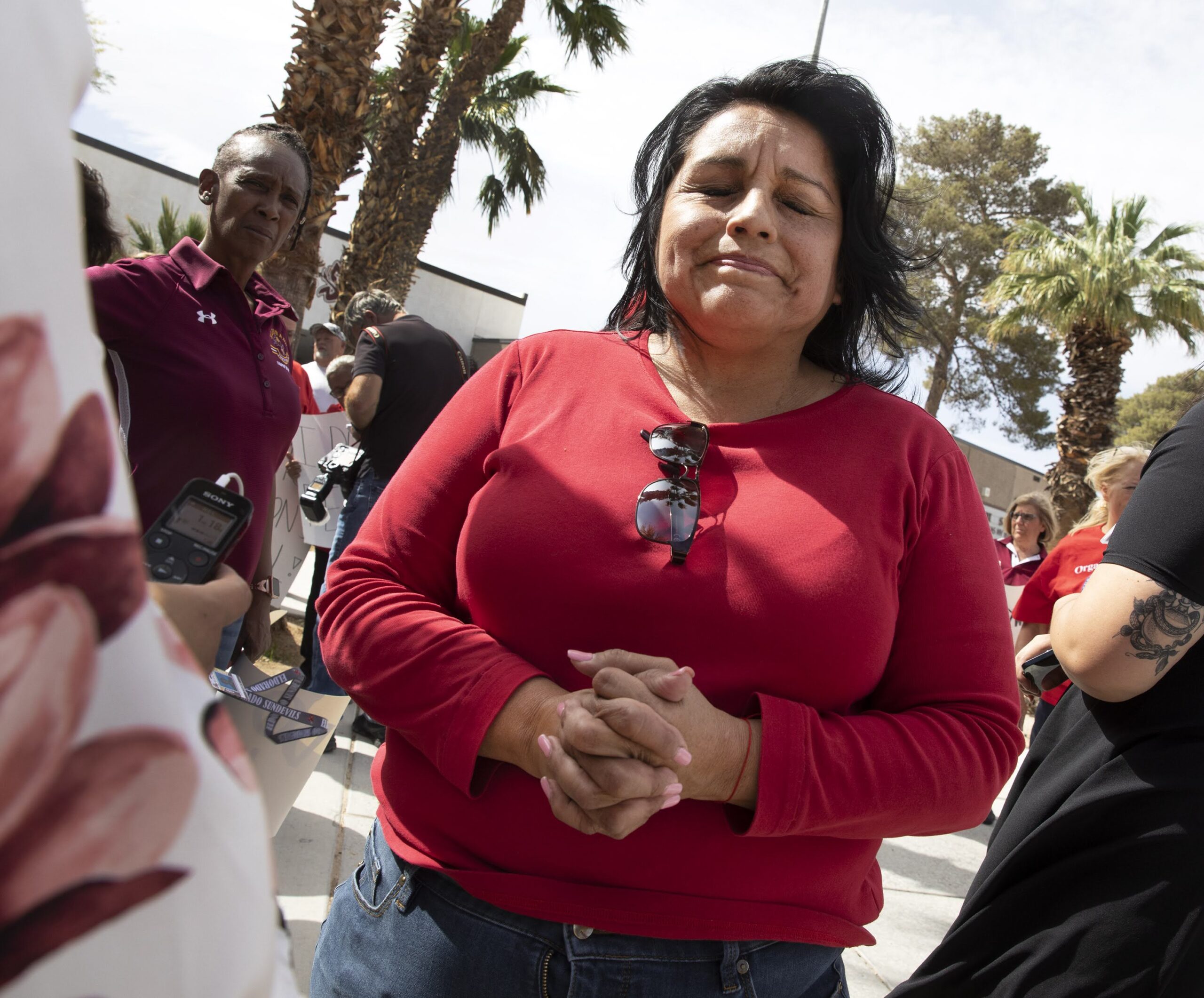
Eldorado High School substitute teacher Adriana Martinez struggled while getting up for work on the first day back from spring break.
That’s because days before the break started, a student allegedly attacked a teacher at the east Las Vegas school. The 16-year-old is facing 15 felonies, including sexual assault and attempted murder, in connection with the April 7 incident.
Martinez said she had many plans for her week off but ended up not doing anything because she kept dwelling on the incident and worrying about her coworker.
“This is an individual I know,” she said. “Someone hurts one of us, it's like hurting us personally.”
Martinez was one of about three dozen Eldorado staff members and students who held a protest outside the school the first day after spring break. They gathered to express their outrage over the incident and demand better safety measures.
School safety is an issue that Nevada officials have been working on improving for years, and even more so since then-Gov. Brian Sandoval stood up a Statewide Safety Task Force in 2018. The group was formed months after a mass shooting at Stoneman Douglas High School in Parkland, Florida that left 17 people dead and 17 others injured, and sparked a student-led movement calling for stricter gun control.
It also came just months after a gunman perched himself in a Mandalay Bay hotel room and opened fire on the Route 91 Harvest music festival in Las Vegas.
Ultimately, the task force issued a number of recommendations that informed school safety laws that emerged from the 2019 legislative session.
One of those measures was an effort known as restorative justice – a practice involving non-punitive intervention and support provided by a school to a student to improve behavior, and remedy any harm caused by said student – that seeks to reform student disciplinary practices in order to reduce expulsions.
But almost three years and one unforeseen pandemic later, schools continue to grapple with safety issues. In Southern Nevada, educators are seeing increasingly violent behavior among their students. When classes resumed after spring break, two Clark County high school students and one middle school student were arrested in a single day in similar incidents involving battery or assault against school employees, according to media reports.
The situation has some pointing out deficits in the 2019 law that they say, if addressed sooner, could have helped prevent a share of the student misconduct that’s occurring today.
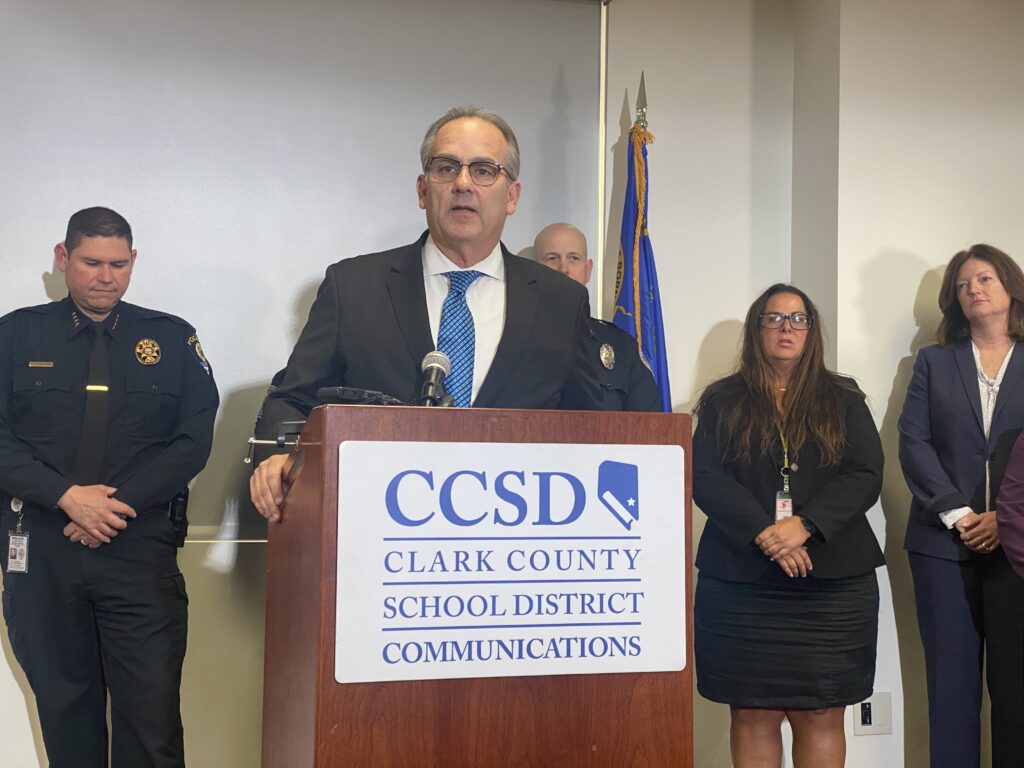
'Handcuffs' on educators, system
Days after the attack on an Eldorado High School teacher, the Clark County School District held an April 12 press conference to announce new safety measures and reiterate that violent acts, assaults and bullying wouldn’t be tolerated in the roughly 320,000-student district.
“Should students or adults resort to violence on our campuses, you will be removed and held to account and prosecuted accordingly,” Superintendent Jesus Jara said.
But Clark County Education Association President Marie Neisess felt this messaging wasn’t enough. During the press conference, she pointed at the 2019 restorative justice law – which the bargaining unit had conditionally supported at one point – and said is handcuffing educators and administrators from disciplining students for violent behaviors.
Before this law, Neisess said educators and administrators could immediately remove students from school if they engaged in battery against staff that caused bodily harm.
CCEA Executive Director John Vellardita said something similar at a Nevada Independent IndyTalks event in late March.
“Educators do feel helpless, particularly in these really tough schools,” he said at the event, adding that he agrees that disruptive students shouldn’t simply be thrown out in the streets. “But you can't pass legislation that handcuffs educators and handcuffs the system to deal with disruptive behavior … particularly after we've gone through what we've seen with this pandemic, and what it does to behavior and mental health.”
But Assemblywoman Selena Torres (D-Las Vegas), one of the sponsors of the restorative justice bill AB168, fired back at that assertion. She said the law doesn’t prevent schools from removing violent students.
“Restorative justice does not mean that students cannot face consequences,” she said. “Restorative justice does not mean that students cannot be suspended or expelled.”
She added that at one point, school district and CCEA leaders stood by her and her co-sponsor Assemblyman Tyrone Thompson (D-North Las Vegas), who died in May 2019, a few months after they first brought up the bill for consideration three years ago. The bill passed out of the 2019 Legislature with just one no vote in both houses.
“If this legislation handcuffed the school district, I doubt we would have gotten bipartisan support from almost every single legislator,” she said.
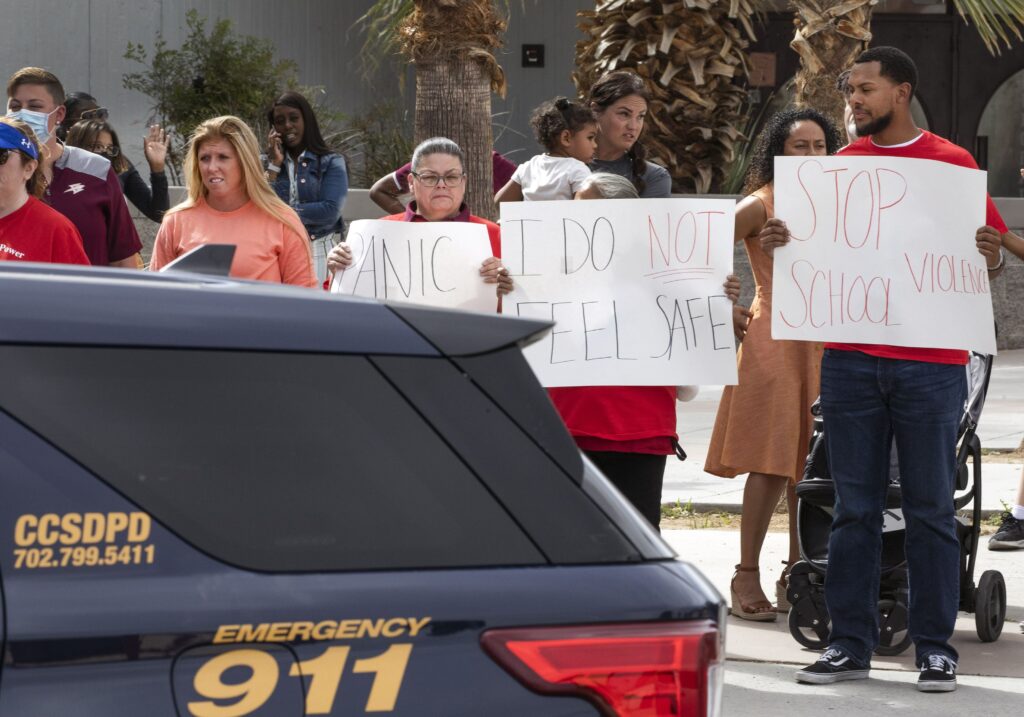
Behind the push for restorative justice
Even before the 2019 law was enacted, the Clark County School District was already looking for ways to reduce the so-called school-to-prison pipeline, which refers to school disciplinary practices that push students into the criminal justice system. Studies have found that heavy-handed disciplinary practices can put students on a path toward increased risk of arrest and increase their chances of dropping out of school altogether.
District officials sought less punitive consequences for students who committed minor offenses, thus preventing them from entering the criminal justice system.
In 2018, the district launched its School Justice Partnership with the Clark County Department of Juvenile Justice Services, the Clark County District Attorney’s Office, CCEA and others.
Under the program, schools were encouraged to use intervention and support strategies to keep students who committed minor criminal acts, such as trespassing, obstruction and petty larceny, out of the court system.
“The School Justice Partnership is not about keeping dangerous and violent kids on campus,” said then-Assistant Superintendent Tammy Malich in a September 2018 Las Vegas Review-Journal story. “It’s about changing behavior of kids that haven’t escalated to that level.”
Torres said she and Thompson were looking to do something similar on a statewide scale, especially given the high rates of suspensions and expulsion among Black and Hispanic students. From 2014 through 2018, the number of Black and Hispanic students suspended or expelled in Clark County outpaced the rates for other student groups, according to district data.
Under restorative justice practices, Torres said students are encouraged to take ownership of their actions by asking themselves what led up to their behavior and understanding how it affected others. Students are also given the opportunity to remedy the harm their misconduct has caused, and think about how they can prevent it from repeating in the future.
These are strategies that Torres, who’s also a Las Vegas public charter school teacher, said she uses in her own classroom.
“It's about having conversations with our students like, ‘Why did we have that behavior? What could we have done differently? Moving forward, what are we going to do?” she said.
AB168 followed a recommendation by the Statewide School Safety Task Force to make “necessary statutory or regulatory changes regarding the disproportionality of school discipline.”
The bill — approved by legislators and signed into law by Gov. Steve Siolak — created some restrictions against removing, expelling or suspending students who are 10 years old or younger and those who receive special education services under an Individualized Education Program (IEP).
It also prohibits removing, suspending or expelling students solely for offenses related to attendance or truancy, according to a memo by the Nevada Department of Education. It also changed language in state statute that said students “must” be expelled for committing battery that results in bodily injury of an employee to “may be expelled.”
“The intention is to address some of the disciplinary measures that were put into state statute that tied the hands of administrators that wanted to find other ways to respond to incidents on campuses,” Torres said.

But for Vellardita, the previous language — which immediately expelled students in cases involving battery against school employees — sent a strong message to others that “you don’t do that.”
“Essentially, that was not done for the last two-plus years,” he said.
The Nevada State Education Association warned state lawmakers about the unintended consequences they foresaw back when the bill was first introduced.
“NSEA takes a strong stance for the safety of educators and advocates that any physical assault resulting in an injury to an educator be given highest priority and not be treated the same as lower-level offenses,” the organization said in a letter provided as testimony in March 2019.
Restorative justice in practice
The law does include exceptions that allow schools to remove, suspend or expel general education students who are under the age of 11 and students with an IEP and who are at least 11 years old, once certain steps are completed. Those exceptions include possession of firearms or dangerous weapons and “extraordinary circumstances.”
Schools are also allowed to request permission from their district’s board of trustees to permanently expel students with IEPs and under the age of 11, again under extraordinary circumstances.
If a school does choose to remove a student for an offense such as battery against an employee, the law requires the school to provide a plan of action based on restorative justice prior to that removal, Torres said. A similar procedure is required for the expulsion of any student. It also requires schools make a reasonable effort to complete a plan of action based on restorative justice prior to the suspension or expulsion of a student deemed a habitual disciplinary problem.
Despite those exceptions, some said the law has made it more difficult for the Clark County School District to hold certain students accountable for misconduct.
Jeff Horn, executive director of the Clark County Association of School Administrators and Professional-Technical Employees, said before AB168, if a principal needed to remove or expel a student for a violent act involving a police citation, they previously had the option to send that student to an alternative school for a temporary period of time. But Horn has heard even those kinds of cases have been getting kicked back to principals.
“They were being told to work out through the consequences set up at your own school, instead of sending the students outside of that school placement into an academic center for a period of time,” he said.
Kent Roberts, principal at Green Valley High School, said he personally hasn’t had issues removing students who commit more serious offenses such as battery against employees, but he heard of a case at another site where the administration tried to discipline a student who was diabetic for pushing a school employee.
“They were told they couldn't because the student has a medical condition,” Roberts said. “That can't stand. We can't operate that way. Teachers won't teach. They won't join the profession.”
Vellardita believes the district’s school violence crisis is happening because the law has created a perception among students that they can now get away with misconduct.
The Nevada Independent reached out to Clark County Trustees Danielle Ford and Linda Cavazos, who attended an April protest in front of the district’s administrative building, to get their take on the issue. But Cavazos said only the district’s communications office or the board president could comment on the topic.
Torres, a teacher and legislator, doubts the average student even knows what restorative justice is and what AB168 did.
Instead, Torres said it’s up to schools and the districts to create a culture around what discipline means, and how they will respond to student behaviors.
“I think the reality is that school leaders and educators and any individual working with students in school right now feel that there's little direction,” she said. “It's the responsibility of (the) district to provide that direction to the educators and the school leaders that they're working with.”
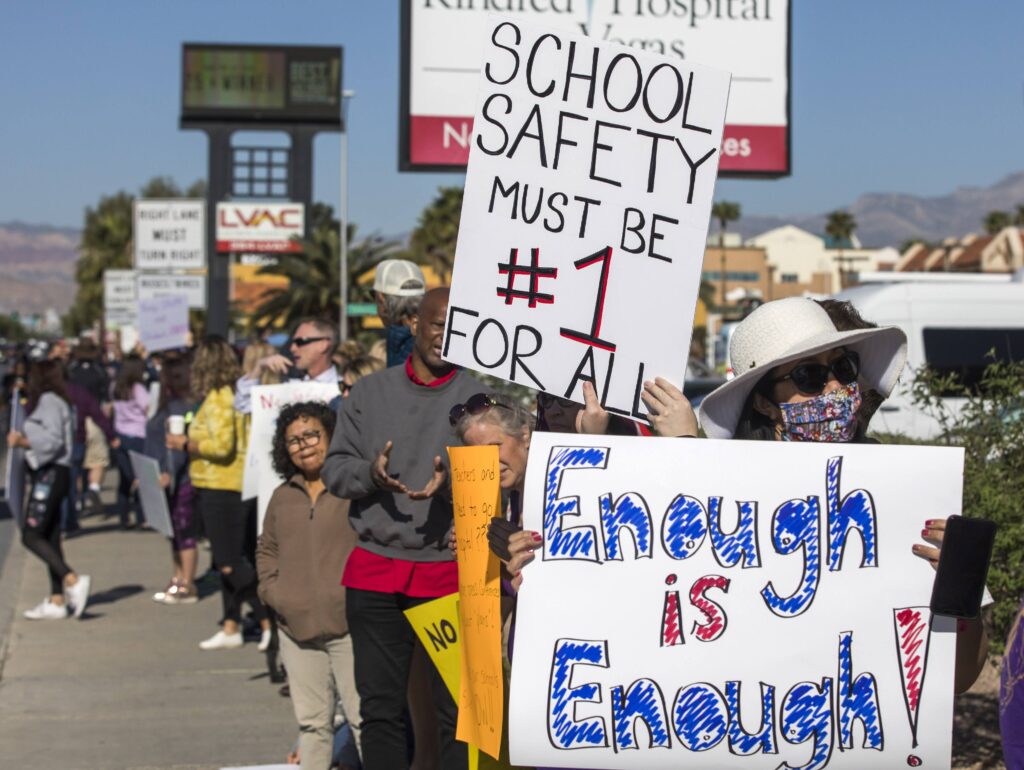
‘Unfunded mandate’
Clark County School District leaders and others say training could have helped smooth out the implementation of the mandate. But school district spokesman Tod Story said the law didn’t come with funding for Nevada school districts to do so.
“School districts — speaking for CCSD, specifically — need resources when these laws are passed, if they are expected to be implemented in any sort of timely or effective manner,” Story said.
The lack of funds is also something NSEA took issue with when the bill was wending its way through the Legislature.
“We believe that a strong restorative discipline system would reduce incidents where educators sustain injuries,” the organization said in its March 2019 letter of opposition. “However, this system needs to be proactive, implemented district-wide, and will require much greater attention and significant new resources that are not reflected in AB168.”
Though CCEA testified in favor of the bill, it also shared similar concerns during the public comment period on the bill.
“Like a number of bills being heard during this session, if this bill passes, it has to pass with additional funding,” a CCEA spokesperson said during their testimony. “Otherwise, it will simply be another unfunded mandate. ”
Torres, the bill’s sponsor, agrees that the implementation of AB168 required training, and said she’s spoken to Clark County teachers who have told her the extent of the training they have received is being told they cannot suspend or expel kids.
Torres said it is the responsibility of school districts to provide proper training on the law to employees, just as they do for other professional development opportunities.
Torres couldn’t immediately say why she and Thompson didn’t include funding with their mandate so districts could accomplish such training, but noted that at the time the bill was introduced, there were three officials present from the Clark County School District, including Superintendent Jesus Jara. None of them mentioned an issue with the lack of funding, she said.
Even if the district didn’t have money for the training back when it was first enacted, Torres said it has since received about $1.2 billion from three federal COVID-19 relief packages.
But Story said those funds can only be used on COVID-related expenses.
However, the Nevada Department of Education said it has invested about $4.9 million in federal COVID relief funds it received to support school systems in trauma-informed and restorative practices through training sessions and coaches. To date, the department said it has trained 257 educators statewide, and another 130 are registered for training through June.
Roberts doesn’t think the training would take much funding if only personnel who have to create and carry out restorative justice practices got trained for it, and other staff members were informed about it.
Even if schools only train select personnel, Roberts said there’s still the matter of finding staff who are willing to do so in addition to their regular duties. Story said there’s also the issue of the district’s staff shortage. He noted the district has around 1,400 open jobs for licensed educators, so even if it did have the funding for necessary training, Story worries there wouldn’t be enough staff to implement the program.
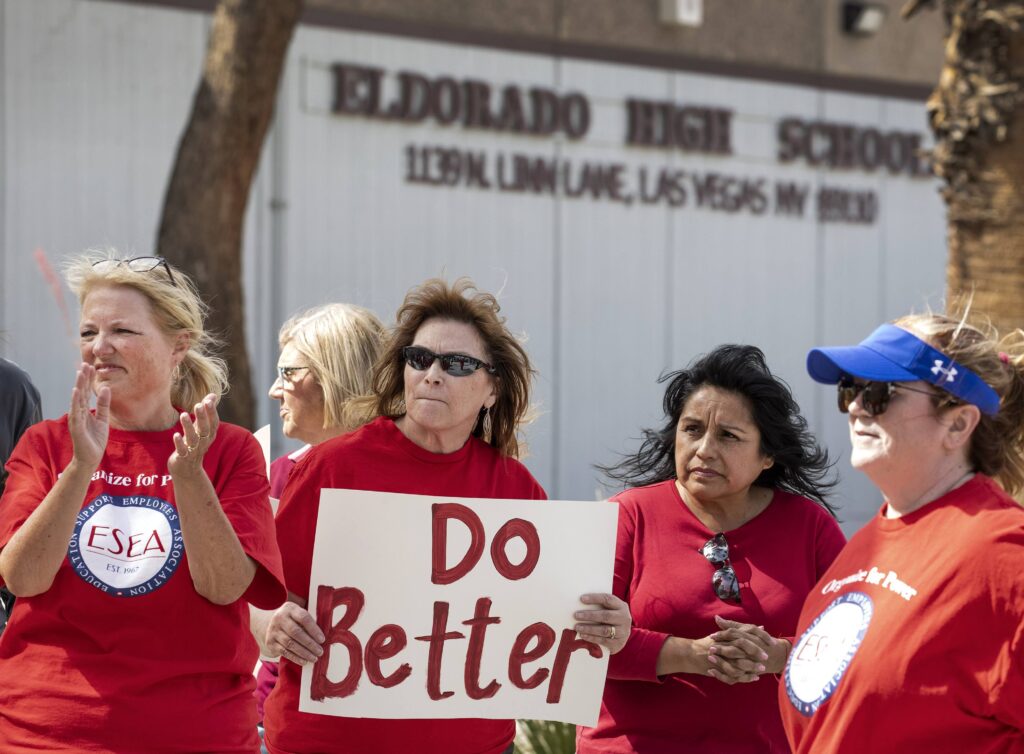
Calling for reform
While CCEA continues to support restorative justice practices to minimize punitive punishments, Vellardita said the bargaining unit no longer supports the bill as is.
During an April press conference organized by the school district, CCEA President Marie Neisess called for Sisolak and lawmakers to review the law, and make appropriate changes.
In addition to providing funding to the mandate, Vellardita said CCEA wants to see language restored that immediately removes students who commit any kind of violent assault against any staff member.
“That's a line in the sand for us,” he said. “Every lawmaker, regardless of their political persuasion, should lead on that because these classes and campuses and buses are not safe at this moment in time.”
Sisolak pushed back on some of the concerns about AB168 by saying it doesn’t prevent schools from expelling “dangerous or violent students”.
“What it does is promote taking a more holistic approach to addressing students’ mental health,” he said in a statement to The Nevada Independent. “Expelling students isn't always the answer. But when it is the answer, like in these recent cases we've seen play out, there is nothing in this bill preventing schools from using that tool.”
Other gubernatorial hopefuls have been more blunt on the issue.
GOP candidate Joey Gilbert has said, if elected, he would “declare a state of emergency to take over Nevada’s public schools and address the rising cases of violence.”
Clark County Sheriff Joe Lombardo, the frontrunner in the GOP primary, wants to repeal AB168 and expand state statute to include “mandatory suspensions and expulsions for any pupil who commits a battery against another student.”
But for Torres, the issue isn’t as black and white.
“I hope moving forward we continue to have conversations about how we can trust school site leaders and trust educators to make the decisions that they need to keep the community safe,” she said, “without tying their hands and saying, ‘No, you can never expel under these circumstances’ or ‘Yes, you always have to expel under those circumstances.’”
For now, the Clark County School District is taking a zero-tolerance strategy to clamp down the violence. Jara is also taking steps to improve security such as partnering with local law enforcement agencies to increase police presence on school campuses, updating security cameras and providing teachers with a panic button.
The district has declined to share the progress of those measures, citing safety reasons.
But despite the district’s efforts, Adriana Martinez, the Eldorado substitute teacher, said at the April protest at her school she didn’t feel any safer.
Martinez has had moments where she’s asked herself why she keeps coming back, but she said it’s all the other kids who continue to drive her.
“This isn’t going to bring us down,” Martinez said. “I am going to make sure that I come back strong so that I can be with the kids.”
